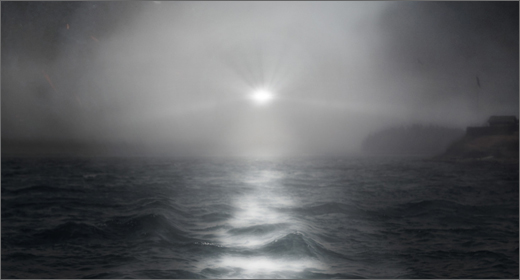The bell has sounded and the sharp attack of that first clang belies the long decay as it drifts across time.
Such a rich and varied construction
Experimental music has a special relationship with the voice of the bell. At the NHK electronic music studio in Japan in 1959, Toshiro Mayuzumi started to work on his series of campanalogy, or bell ringing, recordings. Mayuzumi went all around Japan to record the sounds of the gigantic bells found at Buddhist temples. Then he acoustically analyzed the sound of these bells and then made his first “Campanology,” a ten-minute piece synthesized from the data retrieved from his recordings. Numbers of other Japanese artists have recorded the sounds of sacred Buddhist and Shinto bells at shrines around the land and used them in their own musique concrète.
Decades later this fascination with bells was reprised by Jonathan Harvey and his piece “Mortuous Plango, Vivos Voco” that uses the sounds of a bell from the Winchester Cathedral as a key to its composition.
Karlheinz Stockhausen worked with extensively with bells and so did John Cage and many others. They have a sacred allure. There is something magical about them and their sound. Recordings of bells lend themselves readily to processing and manipulating in the studio.
This is the tradition that Everyday Dust has stepped into, and the work produced can sit right up there with the music made by these pioneers. Overtones puts a fresh spin on the fascination in this thirty-minute composition sourced solely from a single 200-year-old handbell.
From one instrument comes such a rich and varied construction. An acousmatic journey into drifting tintinnabulation. So much so that it’s become one of the standout recordings of 2024, a prismatic work of detailed granular subtlety that immerses me in a continuum of unfolding and and ever transforming mystery.
Echoing macrocosm on a larger scale ::
Everyday Dust has used the practice of taking small snippets and microscopic parts of the sound and manipulating those to refract this echoing macrocosm on a larger scale. It is enchanting, mesmeric, easy to get lost in the bouncing, shifting and changing sounds as they mirror off reverb plates and get shuffled around in the alchemical laboratory of sonic creation.
After shifting through a series of quick transformations, the voice of the bell reemerges in new ways. Sparkles of microcosmic dust turn into percussive beats. The clang of reverberant and dolorous echo sings through time and space. Long drones and extended tones marry with shorter bursts of sounds that slide like zippers of steel.
To me this is an instant masterpiece. It is clear the musician spent a lot of time organizing all the sounds they got out of this one single green patinaed bell that was handed down for generations before arriving in the Scottish studios of Everyday Dust. In a way, this can be listened to as a kind of musical archaeology and exploration of this relic that has been touched and sounded by many hands.
I’d love to get a look in on the process used to make this long track. Everyday Dust has previously released a sound pack of “bespoke open reel tape textures” for other producers and makers to use (I’ve grabbed it myself!) It makes me curious what exactly else is being used. Was this all tape? Computers? Effect pedals? How was the sound of the bell broken down and how was it rebuilt? Regardless of the how, in the here and now of listening, it’s a truly enchanting slab of texture.
The bell will always have a place in the mystical and magical rituals of our species. It will also continue to have a place in the electronic worlds created by today’s musicians. It’s perfect for at home listening for meditation or contemporary ritual and creates instant atmosphere.
This is the kind of thing that is just as good on headphones as speakers. In fact, I’d love to hear this as a sound installation with an array of speakers in a room. Hearing these sounds move through space would only add to the deeply immersive and resonant experience.
The bell has sounded and the sharp attack of that first clang belies the long decay as it drifts across time.
Written, performed and produced by Everyday Dust
Recorded at The Arcane Sound Factory
Mastered by Shell Yeah Audio.
Liner notes by Jo.
Artwork by BMH Arthouse / Everyday Dust
Design & Layout by Metro Design
Overtones is available on Dustopian Frequencies. [Bandcamp]




























